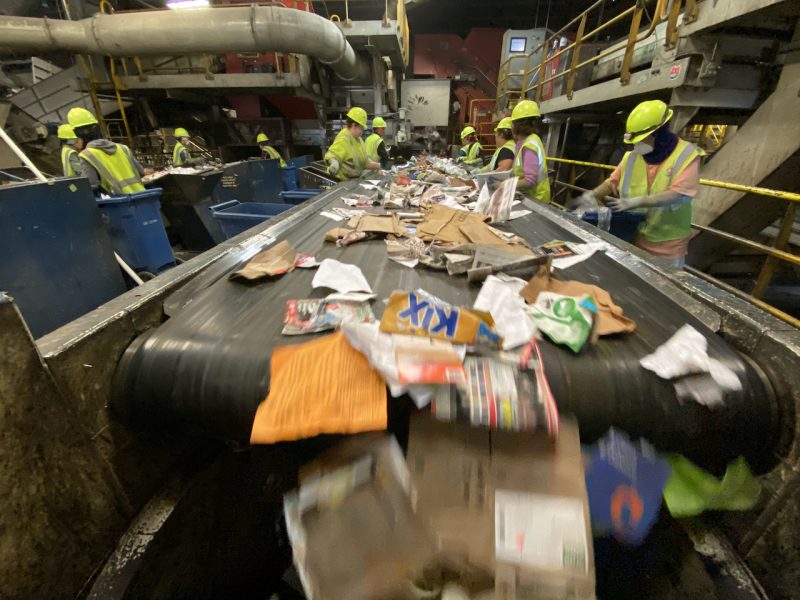
This article was written by Randy Klauk, Hennepin County Master Recycler/Composter
Paper recycling is the next of the Minneapolis recycling articles. Common items are easy to know what goes into your recycle cart: mail, office and school papers; newspapers and inserts; phone books (ha! when’s the last time you saw one of those?); soft or hardcover books (if hardcover, try to tear the cover off but put both parts in your cart. Also you can recycle clean paper bags like from the grocery store (flatten).
Magazines can certainly be recycled, but often there’s another person who can use them. Teachers can use them for students to cut up for art projects or maybe you know of a senior center that could use them. Whomever you give them to, ask them to recycle the magazines when they are finished using them.
Corrugated cardboard (the type we use to mail things) can be no more than 3 feet by 3 feet in size, if it’s larger, cut it down. “Boxboard” is what cereal, cracker, shoe and gift boxes are made from. You can also recycle refrigerated food and beverage boxes like kids’ juice boxes (without the straw). Toothpaste, medication and other boxes that often have a plastic bottle in them (can we say, over packaging?) need to also be recycled.
Corrugated cardboard that does not fit in your recycling cart should be bundled with string or twine (not tape), or flattened and put inside a cardboard box. Set cardboard bundles or boxes next to your recycling cart. Boxes and bundles must not be larger than 3 feet by 3 feet and weigh less than 40 pounds.
The cardboard tube from toilet paper and paper towels is recyclable, but clean toilet paper, tissues and paper towels are not. The fibers from those things are too short to reuse and must be composted. If there’s some toilet paper stuck on the cardboard tube, try and remove.
Another thing that no longer can be recycled in our residential pickup is shredded paper. Back in the day, we were told to put shredded paper into a paper bag and fold the top and then staple it closed. The way paper is sorted nowadays, shredded paper causes problems. There’s a couple of ways you can take care of sensitive documents. If only a portion of the document has private information, tear that part off and recycle the rest. At our house, we keep a separate bag for paper that needs shredding and periodically our bank has a free shredding “event” and we take it there. Search for ‘Free Shredding Event” in Minneapolis, they often happen in spring and fall.
Here’s some paper items that cannot be recycled: Paper egg cartons (compost them), paper cups, paper plates, and boxes from many restaurants that serve Asian food are all garbage. ‘Thermal receipts’ are what you get from most stores and they have bisphenol A (BPA) in them. To test if it is made with BPA, take your fingernail and scratch it, if a mark is left on the paper, it does have it. Throw it in the garbage and wash your hands.
BPA is what was taken out of the plastic bottles we drink from because some research has shown that BPA can seep into food or beverages from containers that are made with BPA. Exposure to BPA is a concern because of the possible health effects on the brain and prostate gland. BPA can also enter your system by touching thermal paper receipts. Several studies have found that handling receipts, even briefly, leads to significant BPA or BPS absorption into the body (info at saferchemicals.org).
While recycling paper might seem straightforward, different types of paper require different disposal methods.


